Japan Adventures Part 5: Yokohama and Shibuya Crossing
So I left off in the middle of my Sunday adventures outside of Tokyo. We had just wrapped up a busy morning in Kamakura and were hopping back on the JR train to take us to Yokohama.
Yokohama is the second largest city in Japan and home to lots of different popular sites to see, but with limited time, Meghan and I narrowed our priorities down to a few main things:
- The Foreign General Cemetery
- Harbor View Park
- Hikawa Maru
In order to get to these three places we had to transfer off the JR trains and onto the local Yokohama subway system. We managed that without a problem, but we did get a little turned around once we got off the train trying to find the cemetery.
After a few wrong turns, we eventually found our way to the entrance of the cemetery. Our guidebooks had said the cemetery was free, but when we got there we realized there was a "suggested donation" of 200 yen. And when I say "suggested donation" I mean you had to pay the money if you wanted to get in. We didn't mind, 200 yen is pretty darn cheap, but thought it was worth noting you should expect to pay to get into the cemetery.
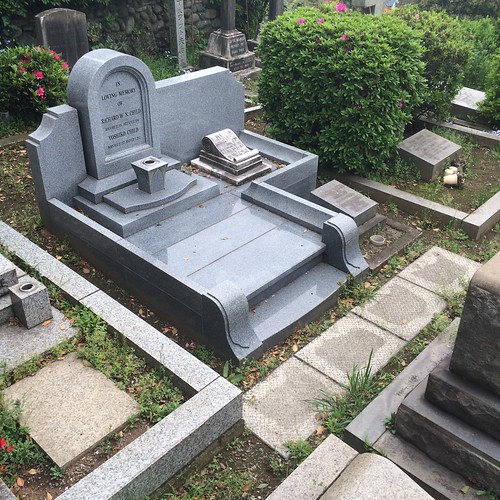
The cemetery was created many years ago as foreign soldiers serving in Japan died and needed a place to be buried. According to the history, an American solider was the first to be buried in what would become the Yokohama Foreign General Cemetery. Russian marines, the victims of xenophobia, were buried there as well. Now the cemetery is home to many soldiers and their families from the United States, Britain and France.
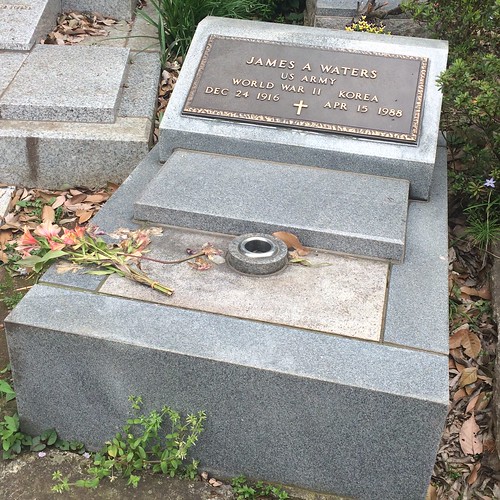
There's also a memorial to the U.S.S. Oneida, which sank off the coast of Yokohama after colliding with a British ship in 1870.

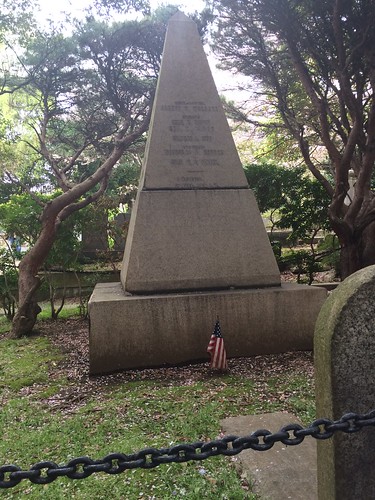
When you enter the cemetery, you get a map that points out some of the most notable graves. There is some really interesting history there.
The man who started the first Boy Scout troop in Japan is buried there. So is the man who first translated the New Testament of the Bible into Japanese.
Perhaps most interesting to me and Meghan, being from DC, was the grave of Elizabeth Scidmore, who was the driving force behind bringing cherry blossom trees from Japan to Washington DC.
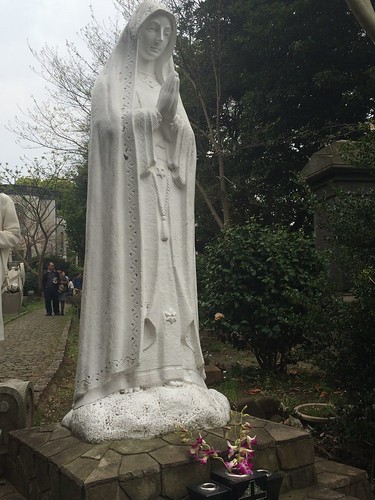
Right before you exit the cemetery, you see the World War I Memorial dedicated to the British, American and French soldiers who were stationed in Yokohama and died during the war.
After leaving the cemetery, we strolled through Harbor View Park, which boasts some pretty views of Tokyo Bay, before heading to our final destination in Yokohama, the Hikawa Maru.
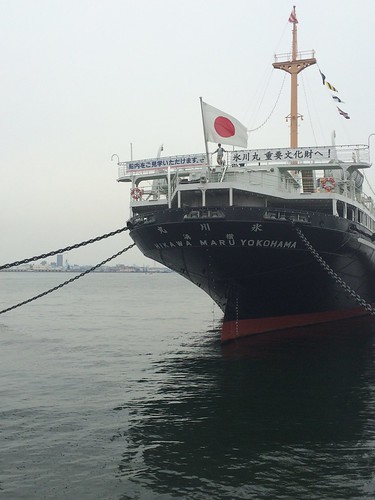
The Hikawa Maru is an old ocean liner currently resting in the Yokohama Port. In her heyday, the Hikawa Maru was a luxury cruise ship that shuttled passengers between Japan and Seattle. The boat was first commissioned in the 1920s and made many voyages back and forth to the United States. During World War II, the Japanese Navy turned the boat into a floating hospital for injured sailors.
We got to tour the luxury first class areas of the ship, seeing the play area for first-class children, as well as the men's smoking room and the dining hall. It was all very fancy and ornate.
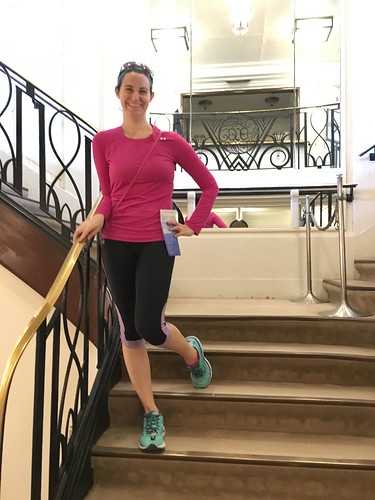
Just picture me in a pretty flowing dress, and not yoga pants. Then I'd fit right in on this boat.
We enjoyed some of the gorgeous views from the upper deck before dipping our head into the wheelhouse, where I showed Meghan how to spelled out SOS on the morse code machine.
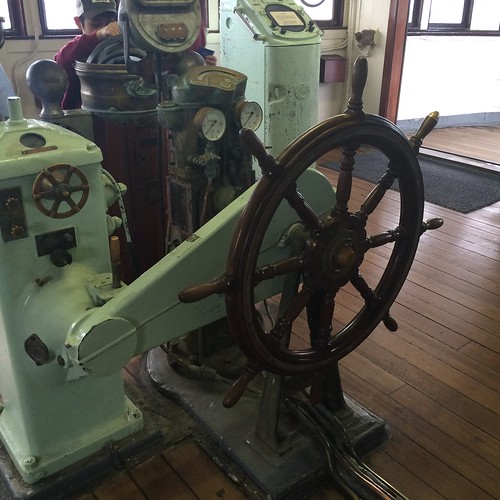
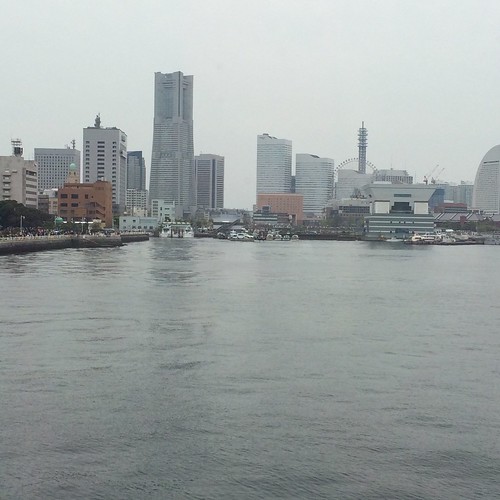
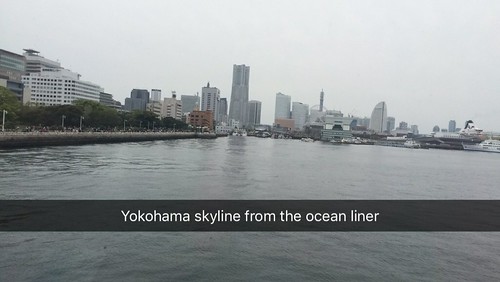
Then we took a trip below deck to see the third-class cabins. Man they were tiny rooms with eight bunkbeds and no private bathrooms. Basically, if you've seen Titanic, you can probably picture what these looked like.
We left the ship after that to head back to Tokyo to meet up with Scott and some of his coworkers for dinner. We went to an Okonomiyaki place. Scott kept describing the food as "Japanese pancakes," and after we sat down and saw how things worked, I understood why. Each table at the restaurant had a grill top and we ordered a mix of things to cook up.
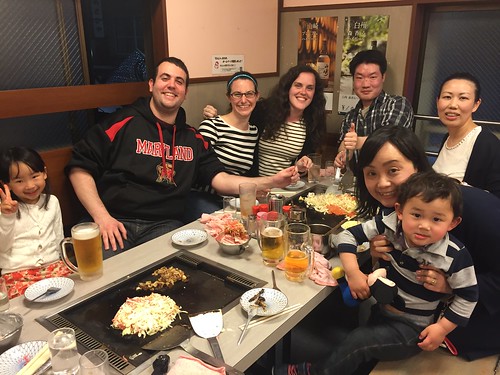
The process of cooking basically involved forming the ingredients into a pancake shape and then dividing them up among everyone. We tried all sorts of different combos -- tomatoes and cheese, something with fish, some more things I didn't recognize. But it was all really, really good. And it was kind of fun to see it all cooked at our own table. Big shout out to Scott's coworkers for taking on all the cooking, while the rest of us just sat there and watched.
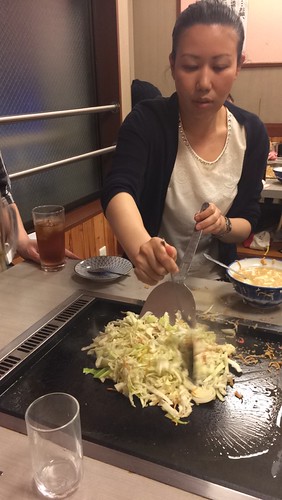
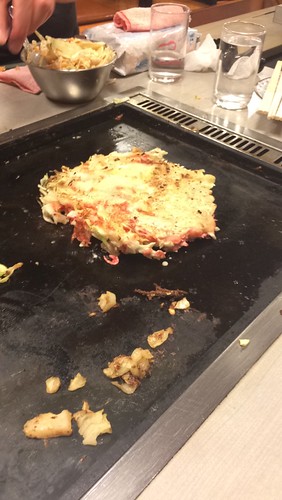
As if our day hadn't been busy enough, Meghan, Scott and I squeezed in one last event Sunday night. We went down to Shibuya to see the famous Shibuya "scramble." Basically this is one massive intersection where something like five different roads come together. The way the traffic pattern works is that all the motor vehicle traffic stops at once and hundreds of pedestrians swarm the crosswalk from all different directions.
We crossed in the chaos and then watched from above in the Starbucks that overlooks like crossing. My picture definitely doesn't do it justice. The video clip in the Snapchat story below kind of captures some of the craziness, but even that doesn't really capture the whole thing. It's definitely one of those things that you kind of have to see for yourself.
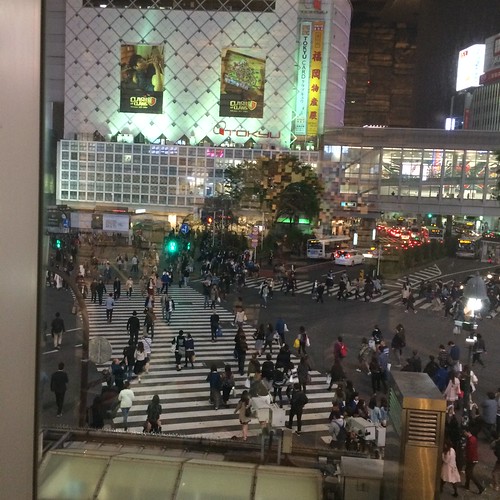
And that about wraps up our Sunday. From Tokyo to Kamakura to Yokohama back to Tokyo it was a crazy busy day, but definitely my most favorite day of the entire trip.
Steps: 31,316 Miles: 13.31
Snapchat Story:
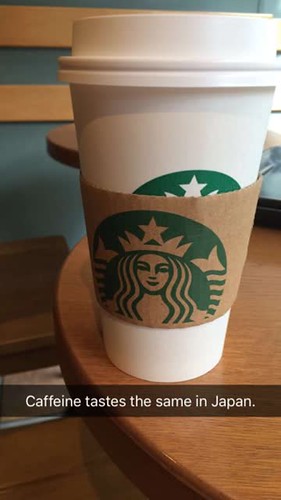

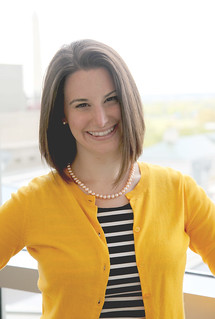



2 comments
Awesome interesting day! Love the pics of the "Japanese pancakes" dinner! Looks like you guys, Scott and the coworker families had a very fun time! :)
ReplyDeleteI'd love to go to Japan. But the frequent earthquakes make it scary for me.
ReplyDelete